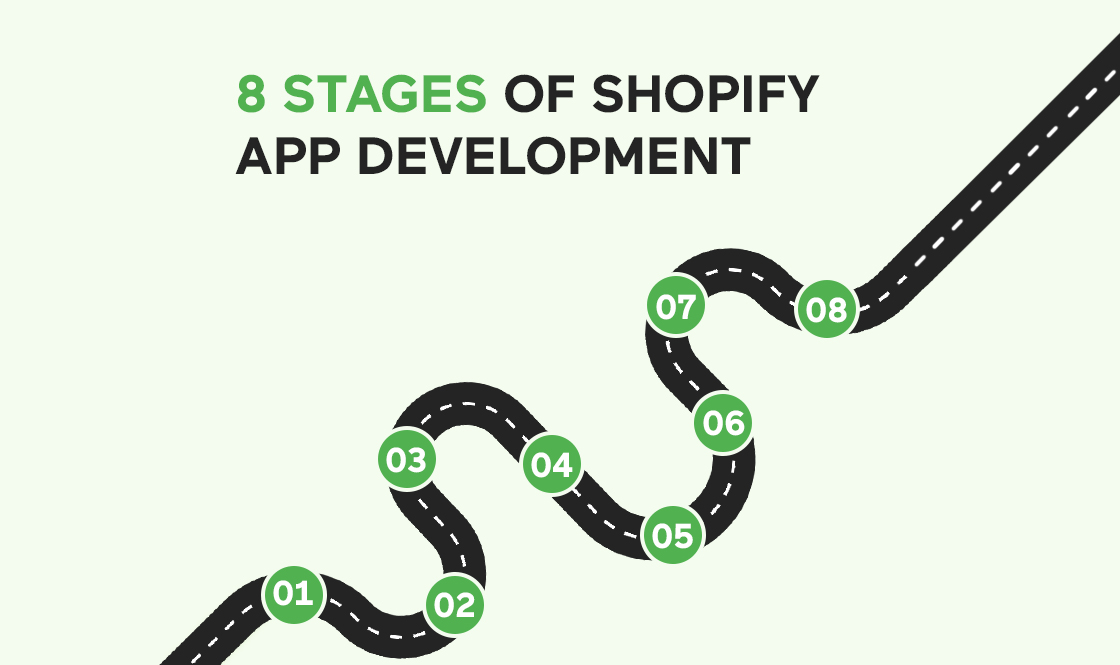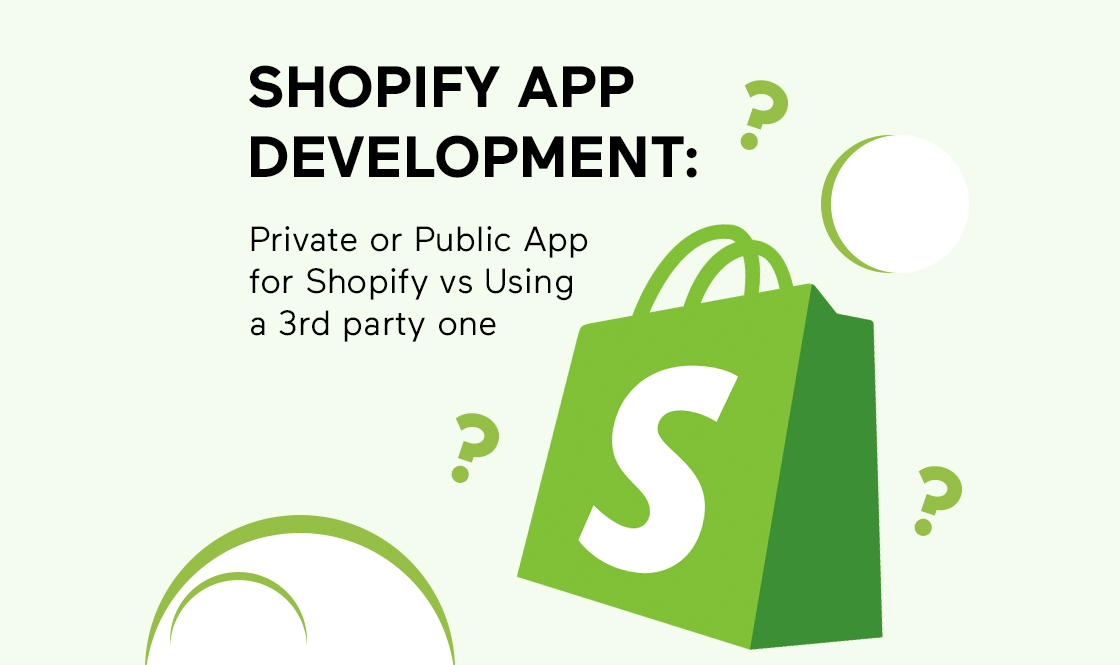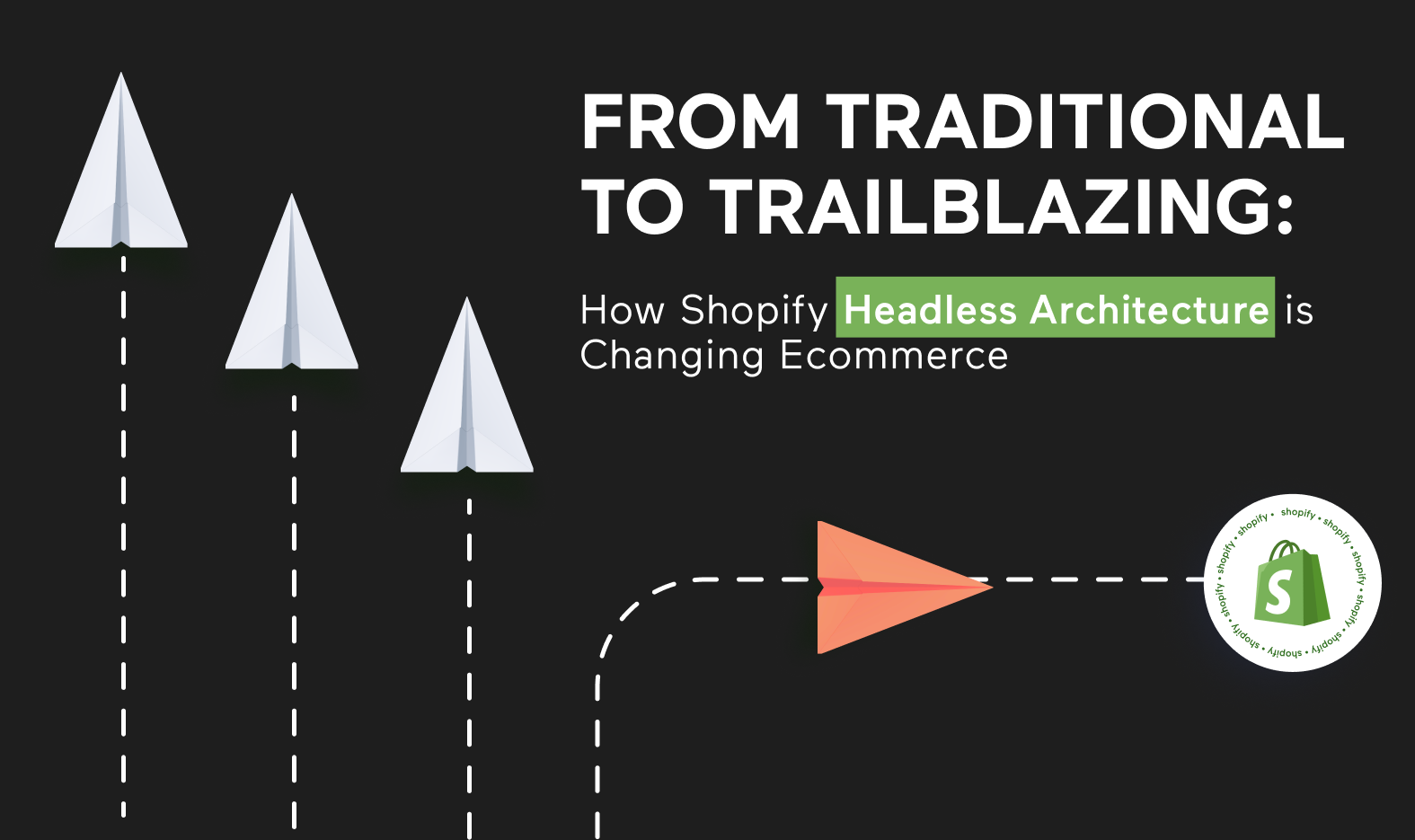
What is Headless eCommerce Architecture?
Headless architecture can feel confusing but it doesn’t have to be. Picture playing with a toy car that has a detachable steering wheel. If and when you take the steering wheel off, the car can still move around, but you can’t control where it goes anymore.
In software development, headless ecommerce architecture is like that toy car without a steering wheel.
Normally, when you use a computer program, you interact with it through some type of user interface that include things like buttons, menus, dashboards, and screens. However, with a headless architecture, there isn’t a defined user interface.
Instead, the computer program is designed to be controlled by other programs that you may have heard about called “APIs”. Think of these like little robots that can talk to the program and tell it what to do.
This can be really useful because it allows different parts of a program to communicate with each other more easily, even if they’re written in different programming languages. It also makes it easier to use the program in different contexts, like on a website or a mobile app.
So, just like the toy car without the steering wheel can still move around, a program with a headless architecture can still work, but it needs to be controlled by other programs instead of people.
With headless ecommerce architecture, the possibilities are endless! This technology provides businesses with the freedom to create unique and innovative experiences that are not limited by technology constraints.
Traditional vs. Headless eCommerce Architecture
Are you curious about the differences between what was once seen as the traditional way to set up an e-commerce store vs how you can set up an e-commerce store using a headless ecommerce architecture? Well, you’ve come to the right post!
To begin, traditional architecture in e-commerce platforms involves tightly coupling the frontend and backend. In other words, any modifications made to the frontend (what your storefront visitors see and use) will also impact the backend, and vice versa. Typically, the frontend displays content to users, while the backend manages data and logic that is served up to the frontend.
In contrast, a headless ecommerce architecture fully separates the frontend from the backend, enabling the frontend engineering team to use any technology it wants. The backend, meanwhile, focuses exclusively on data management and logic. The frontend and backend communicate with one another through APIs (Application Programming Interfaces) in headless ecommerce development. Remember the robots we spoke about above 🙂
Limitations of Traditional E-commerce Architecture
Traditional e-commerce architecture can become a headache, especially when it comes to making changes. If you want to modify the frontend, you have to end up messing with the backend too. This can be a real hassle, and take more brainpower, and a lot of time. Not to mention, there is always the risk you are doing to break some of your code or design in the process.
To make matters worse, traditional e-commerce architecture often limits the flexibility and customization options for businesses. The frontend is usually built on top of the backend platform, which can restrict the use of modern technologies or tools that may better suit your business needs.
Examples of Successful Implementation of Headless Architecture in Ecommerce
Headless architecture is a modern approach that has revolutionized how you can build software within the e-commerce industry. It has allowed companies to create personalized, fast, and immersive user experiences that keep customers hooked.
Take Nike, for example, they have a great storefront and they’re killing it with their decoupled React-based frontend and microservices-based backend powered by APIs. This means they can track their inventory in real-time and customize products to their customers’ preferences, all thanks to headless architecture.
Airbnb has also jumped onto the headless architecture trend, using a GraphQL-based API to deliver lightning-fast search results that are super-customized for their users’ preferences. It’s very cool.
And even Audi, the global car manufacturer, has gotten in on the action with their own custom-built frontend and then they have built their backend into a number of microservices that uses APIs. Buying a car this way has never been cooler 🙂
These success stories serve as good examples of how headless architecture can revolutionize the way businesses approach website development, creating more scalable software, improving their customers’ user experiences, and will set them apart from the competition.
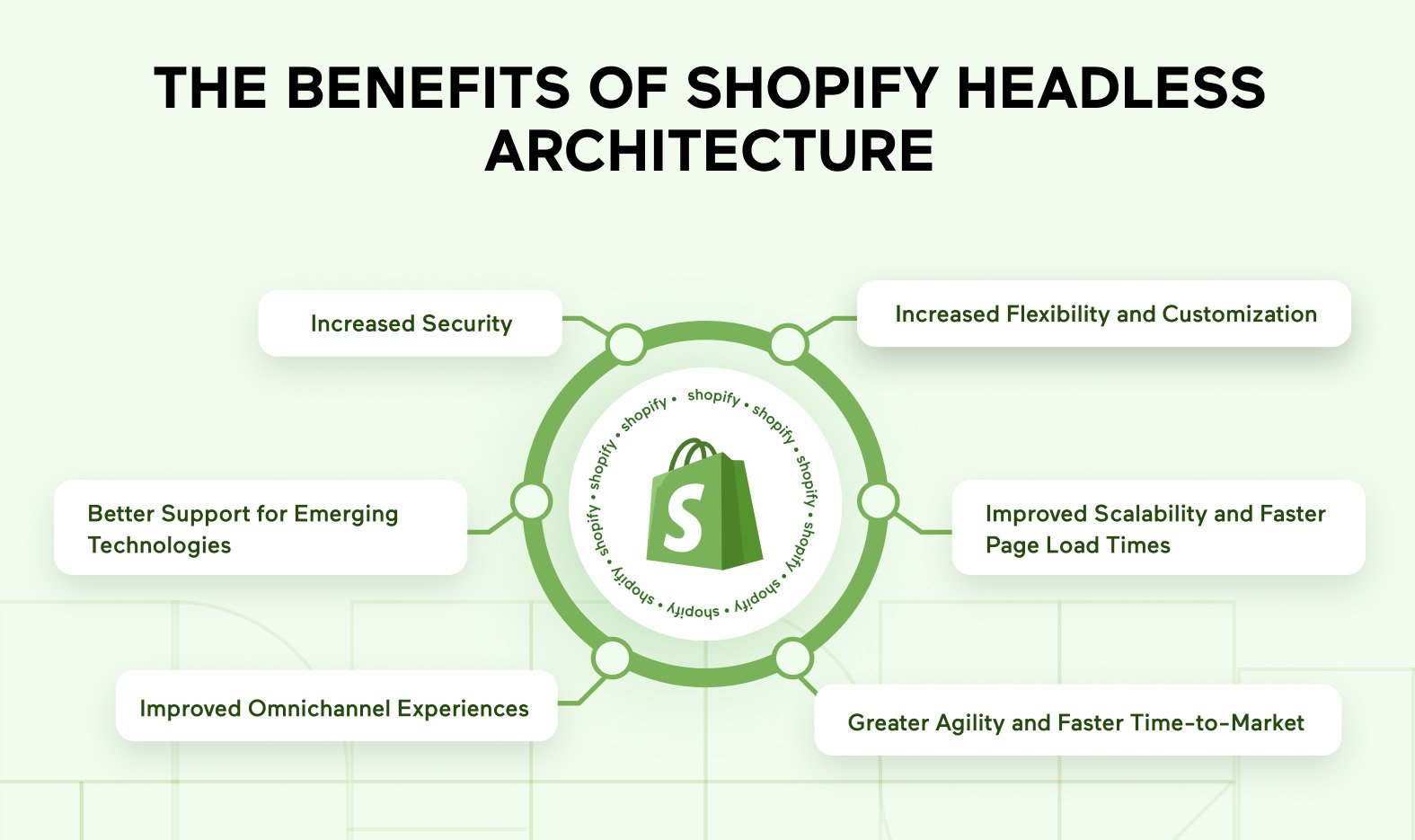
The Benefits of Shopify Headless Architecture
You may ask, “Can I got headless on Shopify?” The answer is yes. Shopify headless architecture offers a ton of benefits that can give businesses a serious edge in the e-commerce game. What are those benefits:
Increased Flexibility and Customization
With Shopify headless architecture, developers have more freedom to choose the technologies and tools that make the most sense for their business and can more easily integrate them into one another. This means greater customization and personalization, which can lead to increased customer engagement, loyalty, and hopefully sales.
Improved Scalability and Faster Page Load Times
The microservices-based backend that comes with Shopify headless architecture is a game-changer. Businesses can sometimes complain about Shopify being slow (and it can be for a number of reasons that we will discuss in a future blog post) but it allows for better load balancing and improved performance, even under heavy traffic. Plus, the decoupled architecture enables the use of content delivery networks (CDNs) and other caching mechanisms, which can further improve page load times and thus your visitors’ user experience.
Greater Agility and Faster Time-to-Market
One of the biggest advantages of Shopify headless architecture is that it allows businesses to make changes to the frontend and backend independently, drastically reducing the time and effort needed to launch and test new features. This level of agility can give businesses a significant advantage over the competition, allowing them to respond more quickly to change and test out more new features.
Improved Omnichannel Experiences
Shopify headless architecture also makes it easier for an e-commerce business to provide a consistent and seamless customer experience across different online channels and devices. By decoupling the frontend from the backend, businesses can more easily adapt to new channels and touchpoints as they emerge.
Better Support for Emerging Technologies
Shopify headless architecture is designed with the future in mind, making it easier for businesses to adopt new technologies and integrate with emerging platforms and tools. This can help businesses stay ahead of the curve and remain relevant in a rapidly evolving digital landscape.
Increased Security
Finally, Shopify headless architecture can provide better security for e-commerce websites. By isolating the frontend from the backend, businesses can now reduce the possibilities that a frontend-focused attack can lead to hackers gaining access to sensitive data in your backend.
How to Implement a Headless Shopify Store
So if you have made it this far, you are most likely considering if you will move to a headless architecture on Shopify. In this step-by-step guide, we’ll take you through the process of setting up a headless Shopify store, from start to finish.
Step 1: Set up your Shopify store
First, set up your Shopify store as you normally would. Choose a plan, pick a theme, and add your products.
Step 2: Choose a Headless CMS
Next up, you’ll need to choose a headless content management system (CMS) to handle your store’s content. Some popular choices include Contentful, Prismic, and Sanity. Once you’ve made your selection, you or your engineering team can integrate it with your Shopify store.
Step 3: Build your Frontend
With headless architecture, you have complete control over your storefront’s frontend. You can use any frontend framework you like, such as React, Angular, or Vue.js. Once you’ve chosen your framework, build your frontend and integrate it with your CMS and Shopify store.
Step 4: Create APIs
To connect your frontend with your CMS and Shopify store, engineers will need to create APIs. This involves using tools like GraphQL and REST APIs to allow your frontend to retrieve data from your CMS and Shopify store.
Step 5: Test and Launch
Test everything thoroughly, including your frontend, APIs, and CMS integration. Once you’re confident everything is working properly, launch your store and start selling.
PRO TIPS:
Choose the right frontend technology: There are loads of frontend technologies out there when implementing headless architecture on Shopify, like React, Vue.js, Angular, and Gatsby. To choose the right one for your business, make sure it fits your needs and has strong community support.
Make use of Shopify APIs: Shopify provides a bunch of APIs that let you access and manipulate data in the backend. By using these native Shopify APIs, you can build custom storefronts that work seamlessly with the Shopify platform and should require less support and maintenance if Shopify makes updates to their APIs. Get to know the APIs and choose the ones that help your business the most.
Ensure a seamless checkout experience: The checkout process is super important in e-commerce, so make sure to customize the Shopify checkout properly when you’re implementing the headless architecture. Test it thoroughly and give clear instructions to users.
Leverage the Shopify app ecosystem: Shopify has a huge app ecosystem with tons of apps that can add all kinds of functionality to your headless storefront. Try out apps for things like product recommendations, search, and reviews.
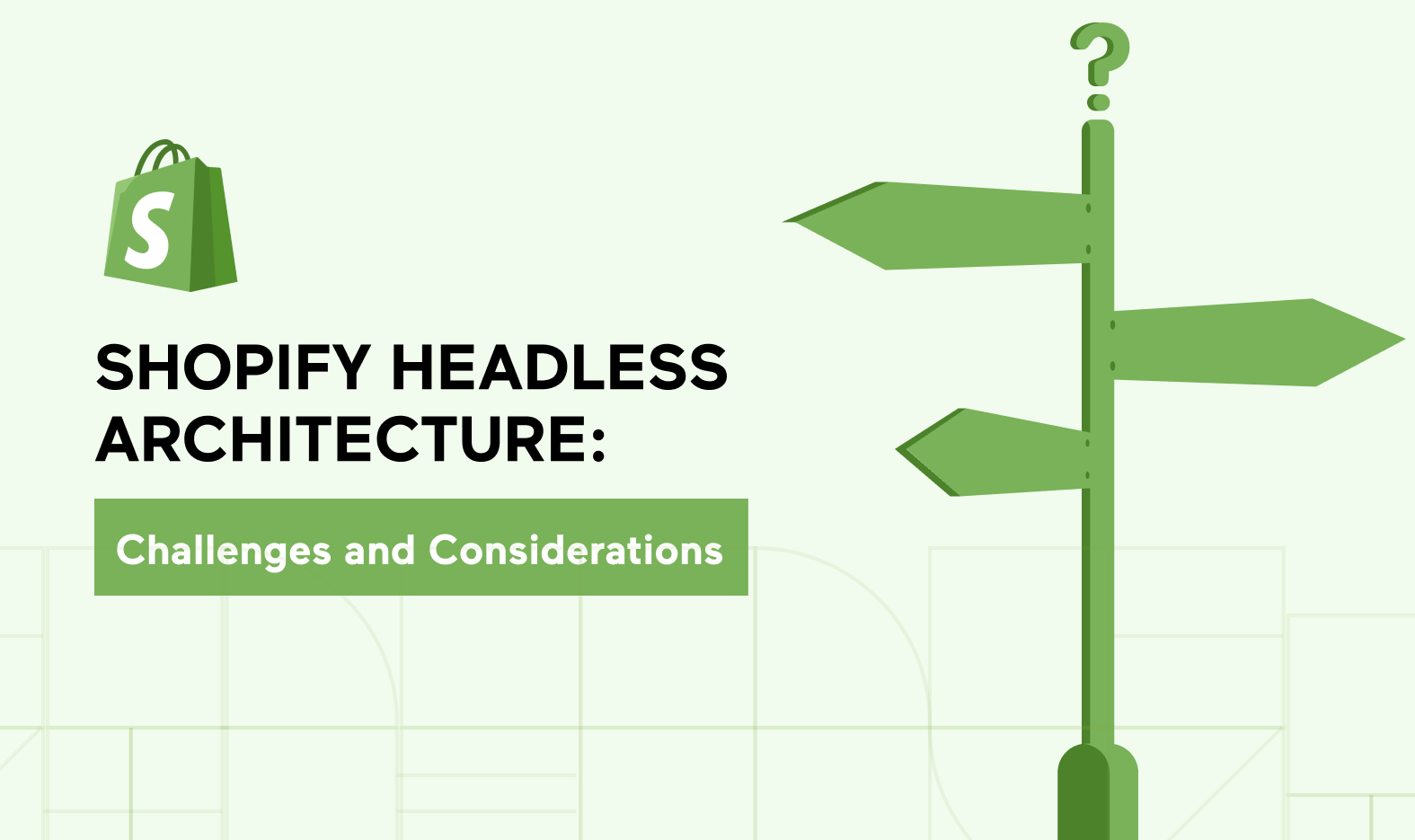
Shopify Headless Architecture: Challenges and Considerations
Headless architecture has emerged as a popular approach for developing modern, dynamic web applications and moving fast in the e-commerce space. However, this new approach brings its own set of challenges and considerations that organizations need to carefully evaluate before adopting a headless architecture.
Technical Expertise Required for Shopify Headless Architecture
One of the main challenges of implementing Shopify Headless Architecture is the need for technical expertise. If you can’t do it yourself, Shopify Headless Architecture requires a strong understanding of web technologies such as APIs, microservices, and frontend frameworks. Developers need to be proficient in programming languages like JavaScript, Node.js, and React, as well as Shopify’s Liquid templating language.
Organizations should also consider hiring or finding outsourced, skilled developers who are familiar with Shopify’s API and have experience building complex web applications. They also need to have a strong DevOps culture, with teams capable of managing the infrastructure and deployment of microservices.
Another consideration is the need for a robust API layer. Shopify Headless Architecture relies heavily on APIs to deliver content to multiple channels, and the API layer needs to be scalable, secure, and perform quickly. It is going to be crucial that your organizations can ensure that they have the right infrastructure and tools to support their API layer.
Potential for Increased Complexity
Another challenge of Shopify Headless Architecture is the potential for increased complexity which requires a smarter and more expensive engineer to maintain and build on it. With a traditional Shopify store, the frontend and backend are tightly coupled, making it easier to develop and maintain the store even for junior or mid-level engineers. However, with Shopify Headless Architecture, the frontend and backend are decoupled, which can lead to increased complexity and skill sets.
Developers need to ensure that the frontend and backend are communicating effectively and that the right data is being sent to the right channels. They also need to ensure that the frontend is compatible with multiple devices and screen sizes and that the user experience is consistent across all channels.
Another consideration is the need for a flexible and scalable architecture. As businesses grow and evolve, their content needs will change, and they will need to add new channels and devices. Organizations need to ensure that their Shopify Headless Architecture is flexible enough to accommodate these changes and that they can scale their infrastructure to meet growing demand.
Tips for overcoming these challenges and considerations for businesses considering headless architecture.
Hire skilled developers: Headless architecture can be more challenging than traditional e-commerce solutions, so it’s important to have a team of skilled Shopify developers with expertise in both frontend and backend development. Don’t skimp on this – investing in the right talent will pay off in the long run.
Focus on user experience: Providing a seamless and consistent user experience can be more difficult with headless architecture, but it’s crucial to prioritize this in your design and development process. Consider using design systems and style guides to ensure consistency across your site.
Ensure strong security measures: Decoupling the frontend and backend can create potential security vulnerabilities, so it’s important to invest in strong security measures to protect your business and customers. Encryption, secure APIs, and regular security audits are all important.
Consider the cost and complexity of implementation: Headless architecture can be more complex and expensive to implement than traditional e-commerce solutions, so make sure to consider the costs of development, hosting, and ongoing maintenance. Don’t forget to factor in the impact on your internal development resources, too.
Ensure proper integration with other systems: Headless architecture can make it easier to integrate with other systems and tools, but it’s important to ensure that your systems are properly integrated and communicating effectively. Tools like Zapier or Integromat can help automate integrations.
Stay up to date on emerging technologies: Headless architecture is a rapidly evolving technology, so it’s important to stay up to date on emerging trends and best practices. Attend conferences, follow industry thought leaders, and invest in ongoing education to ensure your implementation remains cutting-edge.
Wrap Up
As the e-commerce landscape continues to evolve, businesses that embrace new technologies and approaches will be best positioned to succeed. By adopting Shopify Headless Architecture, organizations can leverage the power of APIs and microservices to deliver content across a range of channels, providing a seamless and consistent user experience that drives business growth.
Shopify Headless Architecture has the potential to revolutionize the e-commerce industry by providing businesses with new ways to engage with customers and drive growth. With the ability to deliver content across multiple channels, organizations can create personalized experiences that resonate with customers and increase conversions.

